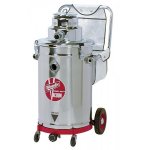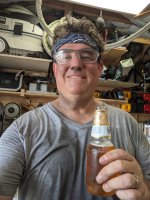Peter_C said:
So the metal I grind does go full airborne.
Shoot a gun, the bullet goes airborne, and quite far. Drop a bullet from your hand and it goes straight down. That's how it works with metal, from great to small.
Of course metal goes everywhere the moment you grind it. Grinding expells metal particles with great force.
Cheese said:
Wood working is dusty but metal working is horrible. A black layer of sediment covers every square inch of the shop and it's like fly paper...you just can't shake the stuff. The stuff is everywhere. It's in your nose, it's on your hands, it's on your face...I'd much rather deal with saw dust rather than metal grinding dust. Two days later and you're still trying to wash the stuff off of your hands. Your hands will literally turn black from the stuff and it will be several days before you can remove the metal dust from your person. The stuff is tragic.
Yeah, I know, Cheese metal dust is bad, sticks everywhere because it has sharp edges, and is also electrically charged which makes it even stickier.
But how is that going to be solved with a vac? How do you collect all the dust from a grinder? How do you make a hood for it that you can use in the many positions you hold a grinder? And how do you solve the red hot particles that can light your vac up?
Staying clean with metal working can be done, but it requires a strong cleaning discipline. When I worked in my father's body shop we had two metal working companies on the other side of the street we sprayed for on a regular basis. One dealt mostly with sheet goods making things like air ducts and containers for various types of equipment. That place was always squeeky clean. The last half our of the day the entire crew would clean the place up.
The other company dealt mostly with heavy metal, lots of H-beams, they built bridges, grain silos, structural supports for buildings, etc. When you walked in there it was like walking into the depths of Hades. Everything was covered in a dark layer of metal and grease, and the grinders and welders were spewing glowing metal everywhere, all day. At the end of the day, they drank a beer and went home.
I'm just a bit amazed the answer on this site always seems to be "more equipment" instead of more technique & more discipline.



